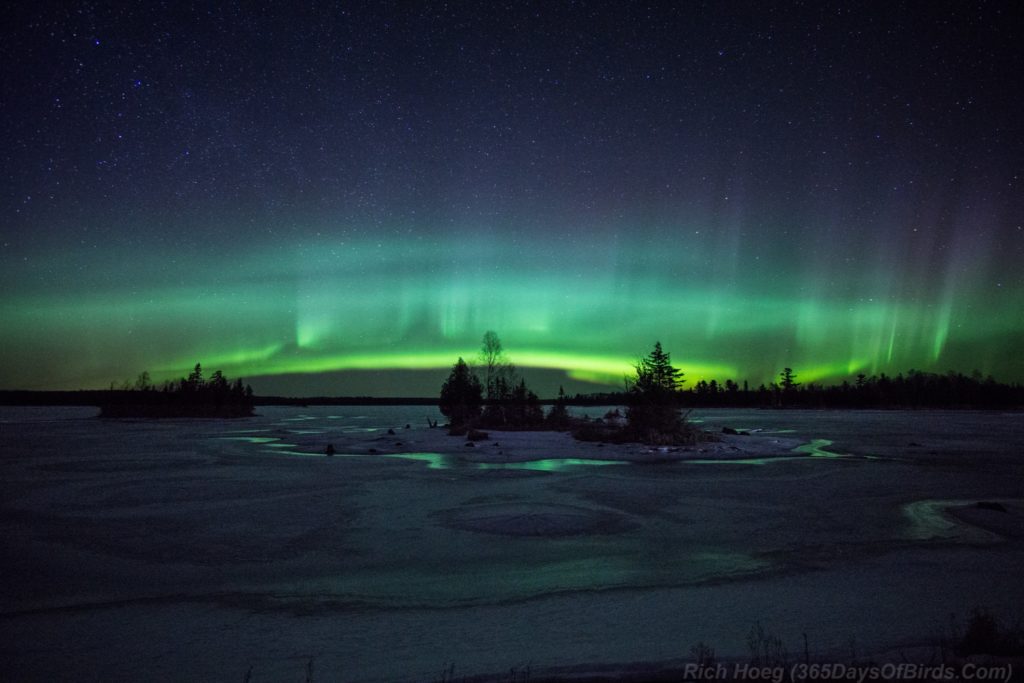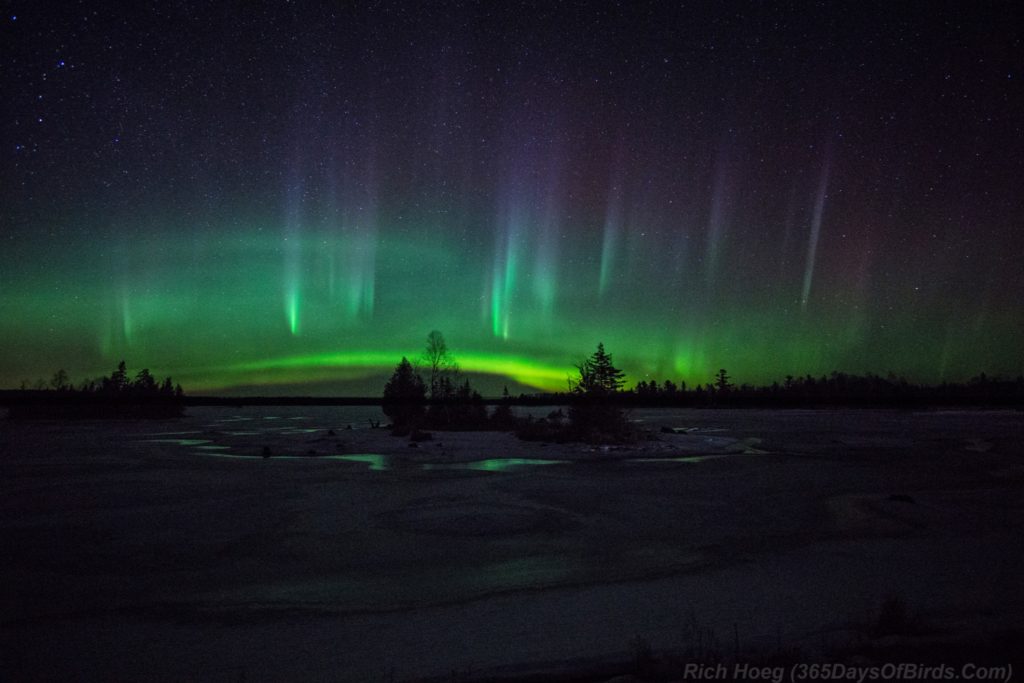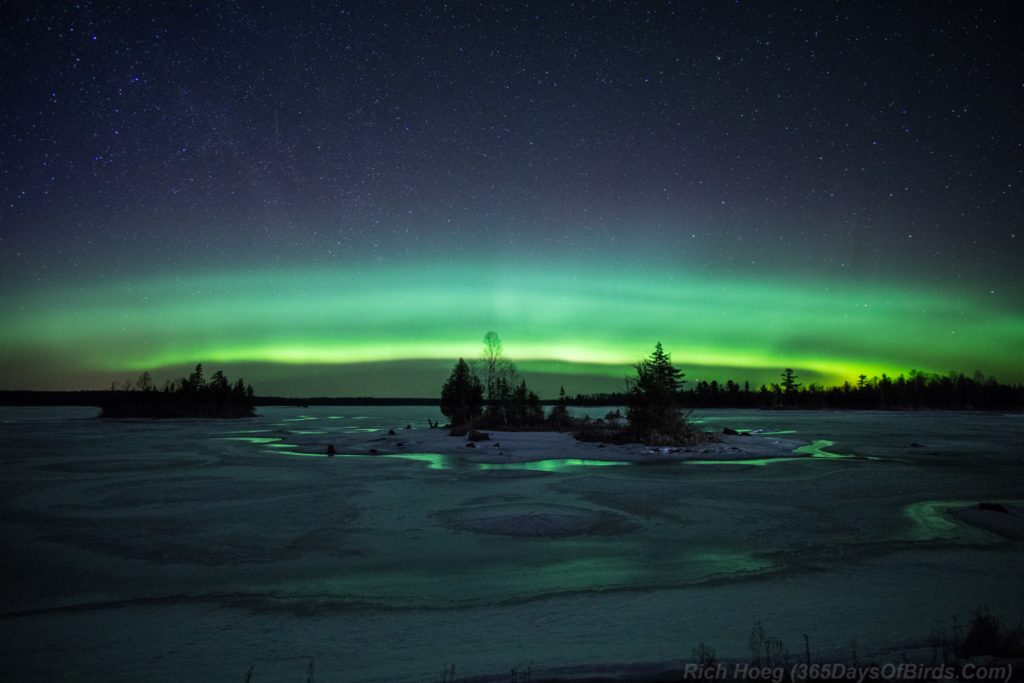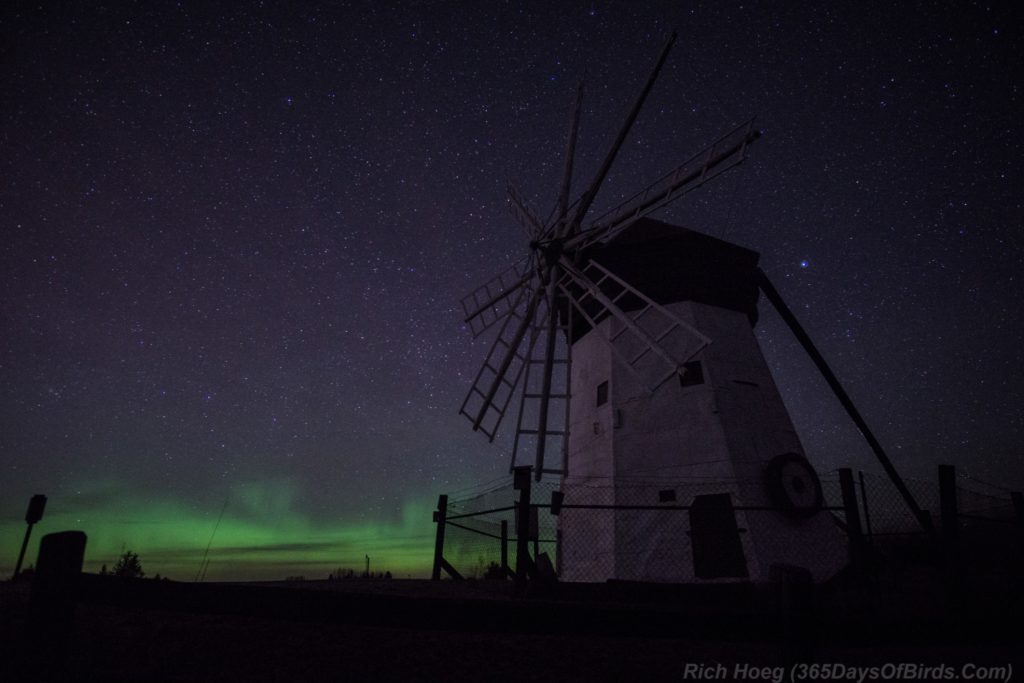After driving over 4,000 miles during the past two weeks, and visiting some fantastic locations including Santa Fe, the Grand Canyon, and Durango, Colorado deep in the Rocky Mountains, Molly and I arrived home yesterday afternoon. Although I was tired from all the driving, and looking forward to a night in my own bed, when the Northern Lights numbers popped I had to head to a frozen lake and hope Lady Aurora would dance. It was a fine performance. She did not disappoint. For ten minutes shortly after 10 pm the light show was spectacular. The refrozen melt water out on the lake ice made for cool reflections.
I then move over to NW Wisconsin to the Davidson Windmill, and hoped for a repeat performance. However, when the 2 am hour approached I realized it was to be a one dance night and I contented myself with a starscape “green glow” image at the windmill.
Lady Aurora Dancing Over Boulder Lake … 25 miles north of Duluth

A Few Minutes Later … more rays / spikes but less light

Ten Minutes Before Lady Aurora Came out to Dance … intense light

The Davidson Windmill Starscape Green Glow

Discover more from 365 Days of Birds
Subscribe to get the latest posts sent to your email.
First this website is a great resource! I found this spot via the website and was there the same night. Unfortunately, I think I arrived after the peak, and I am a new at trying to photograph the aurora, so my photos aren’t very good. I have a Sony RX100 and would like some advice. This particular night, do you recall your camera settings? What camera do you use? Do you use RAW format?
Thanks for sharing your photos!
My camera is a Sony A6000. For the Memorial Day I used settings of ISO 3200, an Aperture of 2.0, and the exposure varied between 2 and 10 seconds. The variance of the exposure was due to the changing intensity of the storm. My Northern Lights page has camera settings which I often start with:
https://www.365daysofbirds.com/minnesota-northern-lights-aurora-borealis-viewing-and-photography/
Make certain you don’the just one set of camera settings. The lights will change, and you should experiment. In addition, shorter exposures will tend to better pick up rays or spikes.
How do you know when and where to go?
Take a look at this blog’s Northern Lights page. It has linked tools for forecasting the Aurora in addition to suggested viewing locations.
Wow! Welcome home.
Gorgeous captures Richard! I am GREEN with Envy! LOL